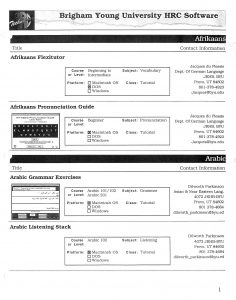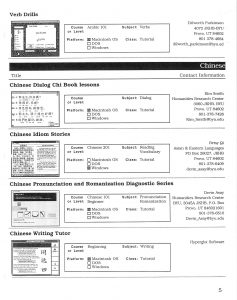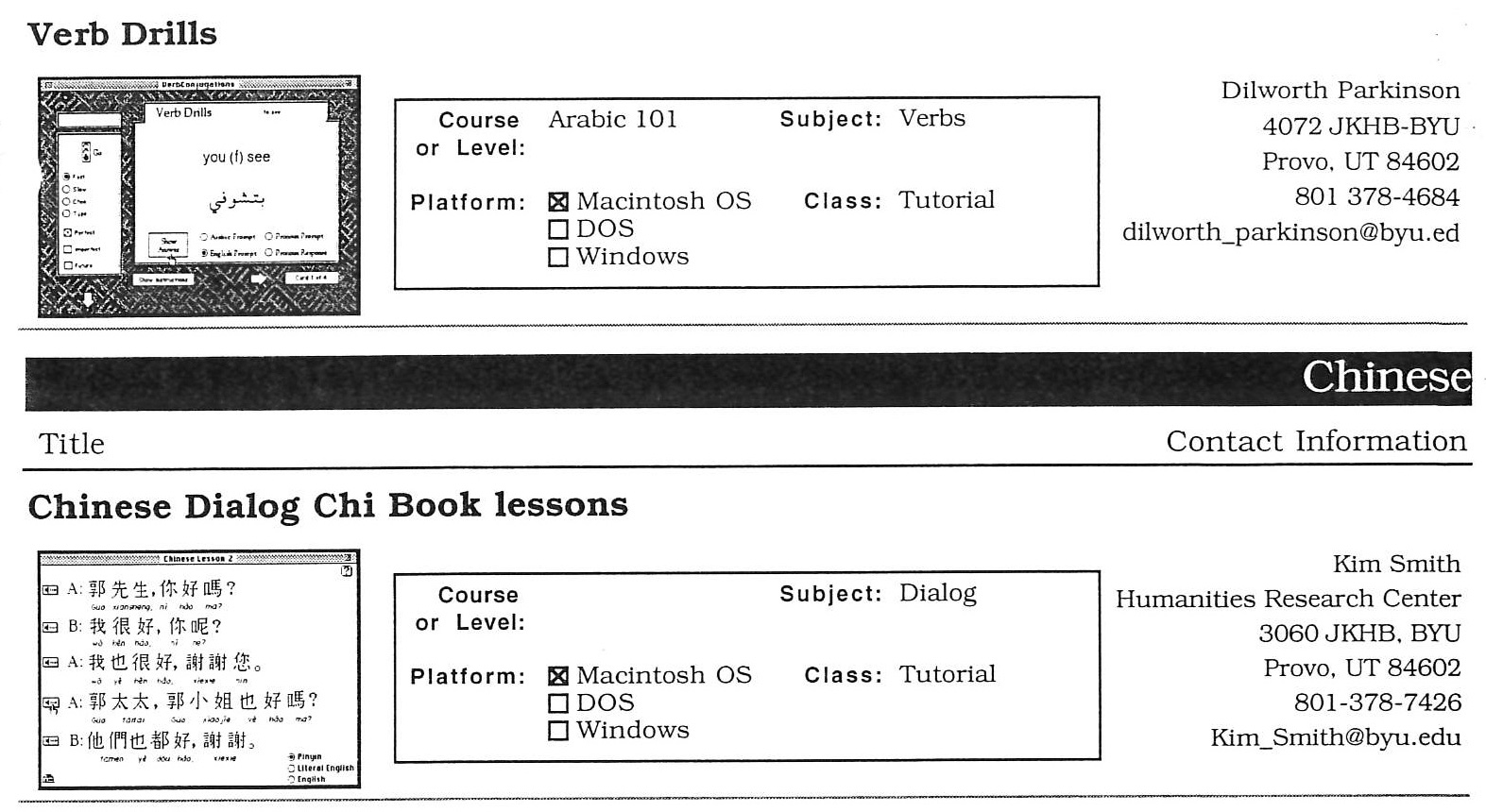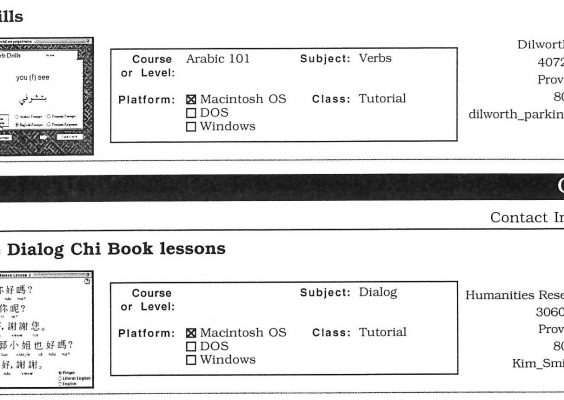A few weeks ago, as I was packing up to move to a new office, I came across a looseleaf binder that I had put together nearly 25 years ago, a few years into my career at BYU. The binder was entitled “HRC Software Database”, and it contained printouts from a database of every humanities and language tutorial and testing software product that had been in use in our Humanities computing labs over the preceding 20 or so years. Much of this software had been developed here at BYU by the Humanities Research Center (the former name of the Office of Digital Humanities) faculty, in cooperation with many of our students and faculty colleagues. Assembling that database of more than 100 applications was eye-opening for me then, and the volume of materials still seems impressive today. Here are just two of the 25 pages of the printout.


While most of these projects have faded from use, a few of them have been updated and are still in use today, including tutorial and testing applications in Chinese, Spanish, and other languages. In a few other cases—Arabic, for example—the pedagogical content of these tutorials has been migrated to other platforms.
At the time I put this database together there was very little software available for language learning and testing, and the BYU HRC was in the forefront of producing this software. Obviously the technology landscape today has evolved far beyond where it was in the 1990s, when the Web was in its infancy, and smart phones, tablets, and ubiquitous WiFi were barely in the conceptual stages. Many language tutorials of the type we labored to build are now freely available on the Web. There are commercially available language learning software products that are more extensive and sophisticated than anything we had created.
Yet, even with everything available out there, my colleagues and I at the ODH are still actively involved in developing custom language tutorials and testing applications. Moreover, we are also actively collaborating with colleagues in the college in applying digital tools and methods to literary and linguistic analyses. Most often these collaborations result in websites, co-authored papers, and conference presentations. Recently the ODH created a web page to catalog and document many of the past and current computing projects under development and in use in the College of Humanities. The scope and variety of projects is impressive. Here is a small sample:
- Cambodian Oral History Project is a groundbreaking project in which field workers in Cambodia collect oral histories from people. These histories are transcribed and translated by volunteers. The recordings, transcriptions, and translations are made available as they are produced on the website. Dr. Brian Croxall worked with Dr. Dana Bourgerie of Asian and Near Eastern Languages to develop the website and the database and contribution workflows.
- FLATS (Foreign Language Achievement Testing Services). You probably know this as the language credit exams that many returned missionaries take to earn BYU credits for their mission languages. But this service is available to schools and colleges throughout the United States who want to offer students a similar opportunity to demonstrate proof of foreign language competency. Our lead web developer, Tory Anderson, is currently completing a rewrite of this online testing application.
- Eye Tracking lab. The Office of Digital Humanities maintains an eye-tracking lab for researchers in the university studying eye behavior of readers at various L1 and L2 proficiency levels. Dr. Rob Reynolds of the ODH provides software and analytical support to this project.
- Quechua Realwords. Based on ground-breaking research by Dr. Janis Nuckolls, this is a site dedicated to an appreciation and study of real words—gestures, onomatopoeia, and similar—that, by their nature, are difficult to define within a traditional dictionary format. Dr. Jeremy Browne from the ODH worked with Dr. Nuckolls to create the database and website.
- Chinese P&R. The Pronunciation and Romanization tutorial and testing application helps beginning Chinese students learn how to recognize tones in Mandarin Chinese, as well as how to use Pinyin transcription to write Chinese. The diagnostic tests help students and instructors know when students have mastered this important skill. This software is the result of a longtime collaboration between myself and Dr. Dana Bourgerie of Asian and Near Eastern Languages.
The faculty and staff of the Office of Digital Humanities are involved in many more projects than this, and we are constantly updating the page with new and ongoing digital humanities projects. We invite you to browse our projects page. We think you’ll find a few surprises, and hope it will inspire you to propose a collaboration with us. If you have an idea, contact my colleague Dr. Brian Croxall to explore how to proceed.

